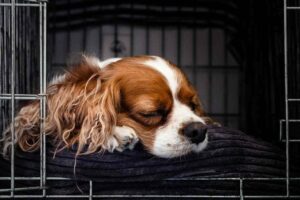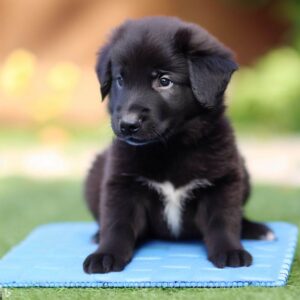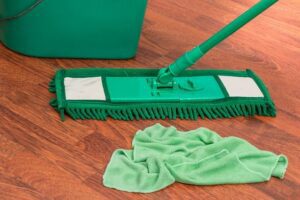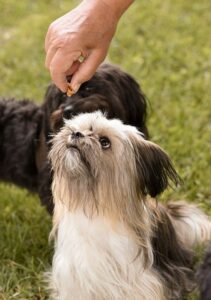The joy and excitement of bringing home a puppy is ineffable. However, you need to prepare yourself to take on the responsibilities that come along. One of the most common concerns for new pet parents is How to Toilet Train a Puppy?
Toilet training a puppy is a gradual process. Please do not expect them to learn it very quickly as it takes some time. Carefully go through the points mentioned below, to learn How to Toilet Train a Puppy.
It is recommended to start with toilet training your pup as soon as possible. The early you start, the easier the process becomes. Once your puppy develops a habit, it may become very challenging to break it later on. Now let’s look into some important aspects of toilet training
1)Limit Access-
Initially, try to limit the access of your puppy to two rooms or one bedroom and a common area where you and your family members spend most of the time. Too many new places and new smells may confuse the puppy. It may also increase the instances of house breaking.
2)Monitor Stress Level-
Monitor your puppy’s movement, sleep pattern and stress level. If your pup is exposed to a stressful and noisy environment, they may feel stressed. This may affect their sleeping pattern, frequency of urination and even their appetite.
3)Feed Them at a Fixed Time-
Dogs and especially young puppies, pick up routines very quickly. In order to toilet train them, you would want to take them out for toilet breaks after a fixed interval. To facilitate this, make sure to feed them around the same time every day.

Puppies usually need a toilet break after every meal, after play time, and after waking up from sleep. If you fix their meal time, it would be easier for you to know when your puppy needs to go out next.
4) Take Them Out Frequently-
Puppies need more frequent toilet breaks than adult dogs. So you need to be more active and alert during the initial phase of toilet training.
Take your puppy out after every meal, after a long and sound sleep and at least once in every 2 hours. They may not give you a hint every time, so it is always better to follow a fixed schedule.
5) Monitor Signs-
Puppies and even adult dogs, tend to sniff the floor before urinating. Stay alert and if you notice any such tendency, immediately take them out to the designated place where they are supposed to urinate.
6) Crate Training-
There are many pet parents who assume that confining a puppy to a crate is cruel. However, it is not always true. A lot depends on the purpose and duration of confinement. Crate training is a very effective method to toilet train a puppy. Dogs usually do not like to sleep or stay at a dirty place. If your puppy spends some time everyday in his/her crate, they will consider it as their living space.

This will reduce instances of house break. This is more helpful when for a particular duration of time in a day, you cannot constantly monitor your puppy. You may need to go out to buy groceries or you may need to attend a guest at home. Crate training is absolutely cruelty free and in fact, many crate-trained dogs consider their crate as the safest place for them in the house.
7) Puppy Training Pad-
Puppy pads are another useful tool for toilet training your puppy. These are leak-proof training pads to facilitate toilet training indoors. But remember, you can only use them once you have learnt to get the signal when your pup needs to go.
You may need to place your puppy on the training pad several times a day, to make them familiarize with it. When the puppy goes potty on the pad or urinates on it, praise them and offer them a treat immediately.

8) Do not Punish for accidents-
Young puppies may go through a lot of stress when their environment changes and they go to a new home. They need some time to adjust at a new place and absorb the toilet training they are on. Please be patient with them. Do not scold or punish them physically for mishaps. House breaking is very normal for young puppies and they certainly do not deserve a punishment for that.
9) Clean up After a Mishap-
If and when your pup accidentally urinates inside the house or anywhere other than the designated space, immediately clean up with an ammonia free pet stain & odour remover. If it is not cleaned properly or any odour is still present after cleaning, that smell would encourage your pup. They may use the same spot the next time they need to go.

10) Reward & positive reinforcement-
As mentioned earlier, a successful toilet training exercise is a gradual one. It is something new for your puppy. So make sure to praise them and appreciate every small step of progress.
Celebrate success by praising your pup and positively associate desired behaviour by offering them treats and lots of love. A belly rub would also comfort them and assure them that they have done a good job!

Happy Training and Happy Learning!

